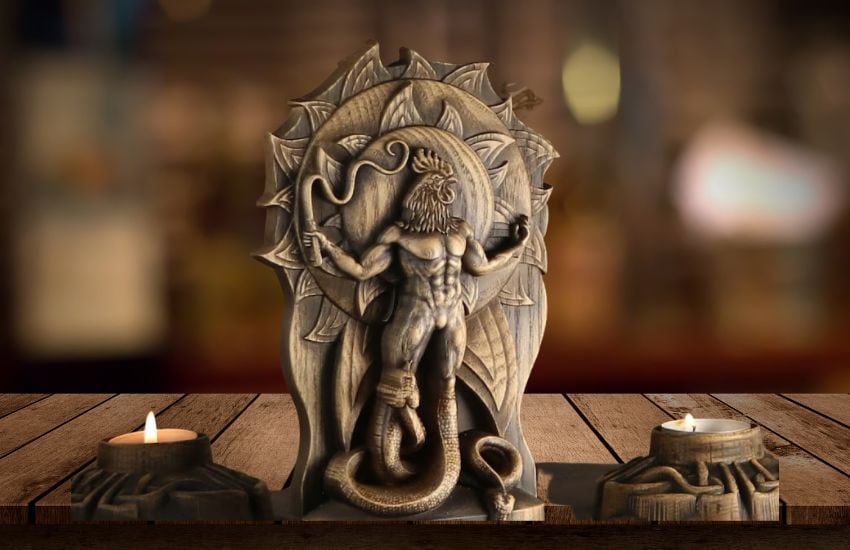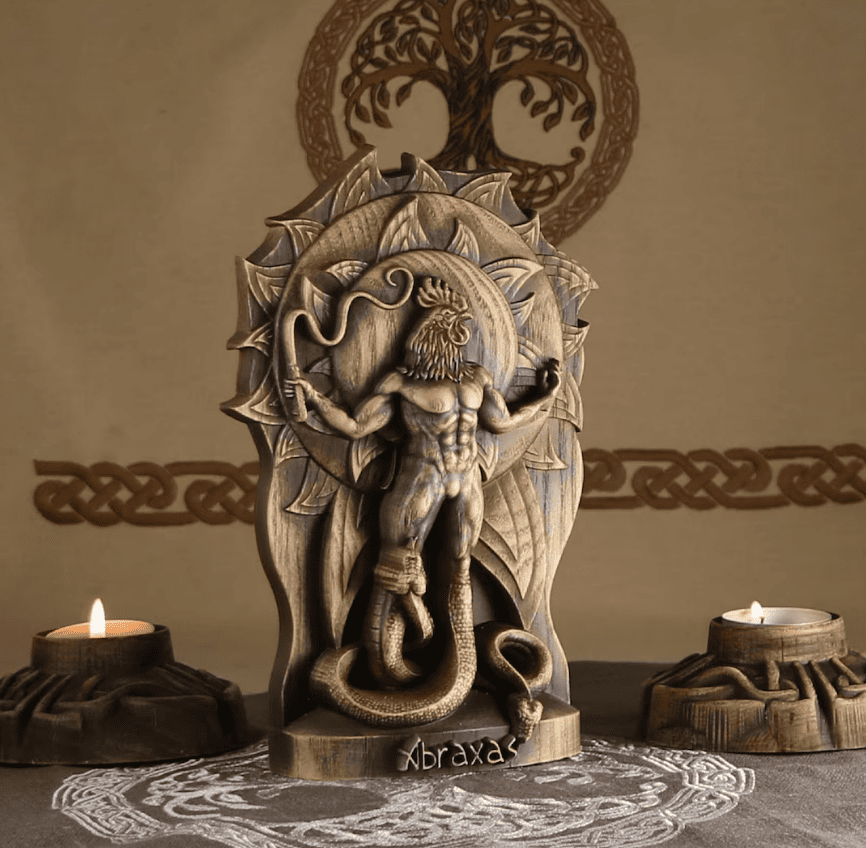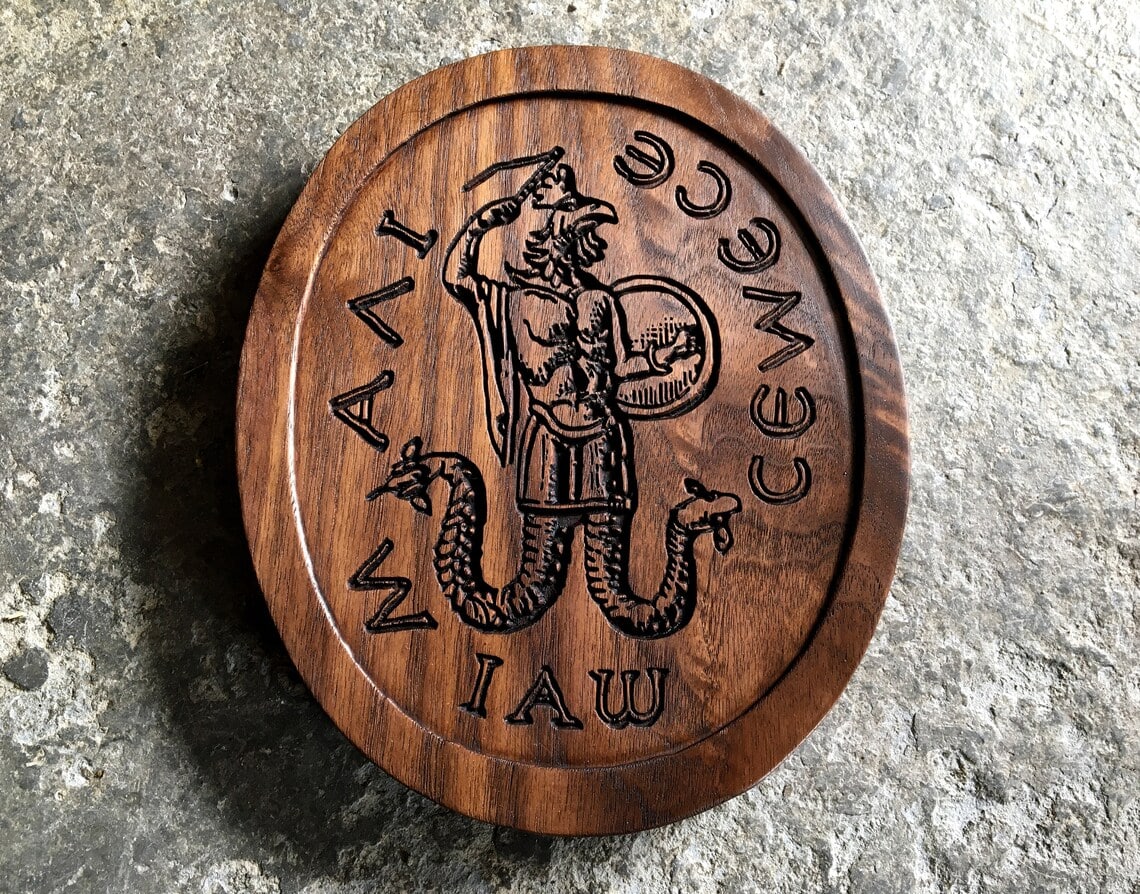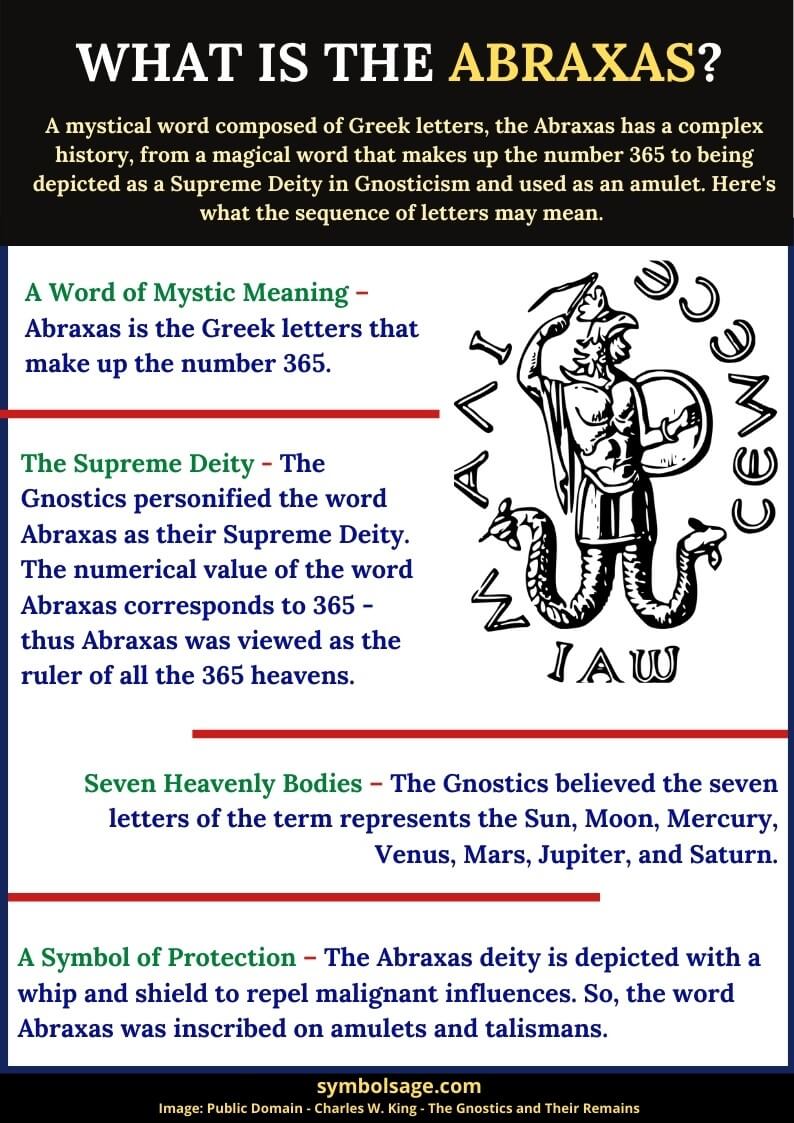
Table of Contents
A mystical word composed of Greek letters, abraxas is found inscribed in relics in Egypt, from tablets to gems and amulets. The Abraxas has a complex history. It’s a magical word that makes up the number 365, but it has also been depicted as a Supreme Deity as well as an amulet. While its history spans different epochs and interpretations, it holds a distinctive place within Gnosticism. Here’s a closer look at its origin and symbolism.
History of the Abraxas

We don’t really know when the word abraxas originated. However, we do know that the numerical value of the seven Greek letters that make up abraxas correspond to the number 365, matching the count of days in a year. Abraxas can also refer to a magical word, a Gnostical deity, or an amulet.
- As a Magical Word
The origins of the word “Abraxas” remain obscure, and while there are many theories, none can be definitively proven. Before Abraxas was a name, it was likely a word of mystic meaning. According to the 1887 text by Charles William King The Gnostics and Their Remains, abraxas carries echoes of the Coptic term Holy Name and the Hebrew term Ha-Brachah meaning Blessing. However, there is also speculation that the term is derived from the Aramaic term abba meaning father, and Latin term rex meaning king.
Abraxas was first recorded in papyri containing texts on magic. It was also found on Gnostic texts such as the Holy Book of the Great Invisible Spirit, also known as the Gospel of the Egyptians. For Gnostics, the term is magical and represents infinite power and possibilities. Some have also argued that the magical term abracadabra is derived from the word abraxas.
- The Supreme Deity in Gnosticism

Gnosticism became known in the 2nd century A.D. as a philosophical and religious movement that relies on esoteric knowledge or personal experience with the divine. Some historians believe that the religion itself has its roots in the ancient Egyptian New Kingdom located at Thebes.
To the Gnostics, Abraxas was a deity. This was likely invented by the Alexandrian scholar and teacher Basilides of Egypt, who founded the Basilidean sect of Gnosticism. In order to invent something more refined in the Gnostic philosophy, Basilides personified Abraxas as a god, and initiated a cult related to its worship as the Supreme Deity. He envisaged Abraxas as a god presiding over 365 heavens, aligning with the term’s numeric value.
This Gnostic god is described as having the head of a rooster, but occasionally depicted with a hawk’s or lion’s head, the body of human being, and two legs in serpent form. The rooster’s head symbolizes vigilance and the serpent legs embody wisdom or rebirth. Note that there are other variations to how this deity is depicted. In Carl Jung’s 1916 book The Seven Sermons to the Dead, he referred to Abraxas as a god higher than the Christian God and Devil, a god that combines all opposites into one Being.
- The Abraxas Stones and Gems
Some believe that saying the magical word abraxas will protect you. This is why it was inscribed on gems and amulets during the 2nd century until the 13th century in Europe, North Africa, and Asia Minor.
Meaning and Symbolism of the Abraxas

The real meaning behind the Abraxas is still up for debate, but here is some of its symbolism in relation to historical records and scholarly interpretations:
- A Word of Mystic Meaning: In general, the term represents the Greek letters that make up the number 365. For Gnostics, the word Abraxas is magical and represents infinite power.
- The Supreme Deity: The numerical value of the letters in a name held importance, and the term itself corresponds to the number of days in a year, so Gnostics may have viewed Abraxas as the ruler of all the 365 heavens and the Supreme Deity.
- A Representation of the Seven Known Heavenly Bodies: The Gnostics referred everything to astrology, and they believe the seven letters of the term represents the Sun, Moon, Mercury, Venus, Mars, Jupiter, and Saturn.
- A Symbol of Protection: Throughout history, the deity is depicted with a whip and shield, which are believed to scare away malignant influences. The sequence of letters abraxas was commonly inscribed on amulets and talismans.
Abraxas in Modern Times
Nowadays, the motif can still be seen on jewelry pieces such as medallions and signet rings but is worn as an amulet than an ornamental piece. While the symbolism still holds great significance in Gnosticism and other religious movements in the modern times, the Abraxas is more commonly found in pop culture, as a mythical character in comics, video games, fantasy films, and television series, such as Charmed and Supernatural.
In Brief
The Abraxas has a complex history, and even today, there’s still debate surrounding its exact meaning and origins. Regardless of whether it originated in ancient Egypt or came from the philosophy of Basilidians, it is likely to remain symbolic to modern-day Gnostics and a source of inspiration as fictional character in pop culture.









